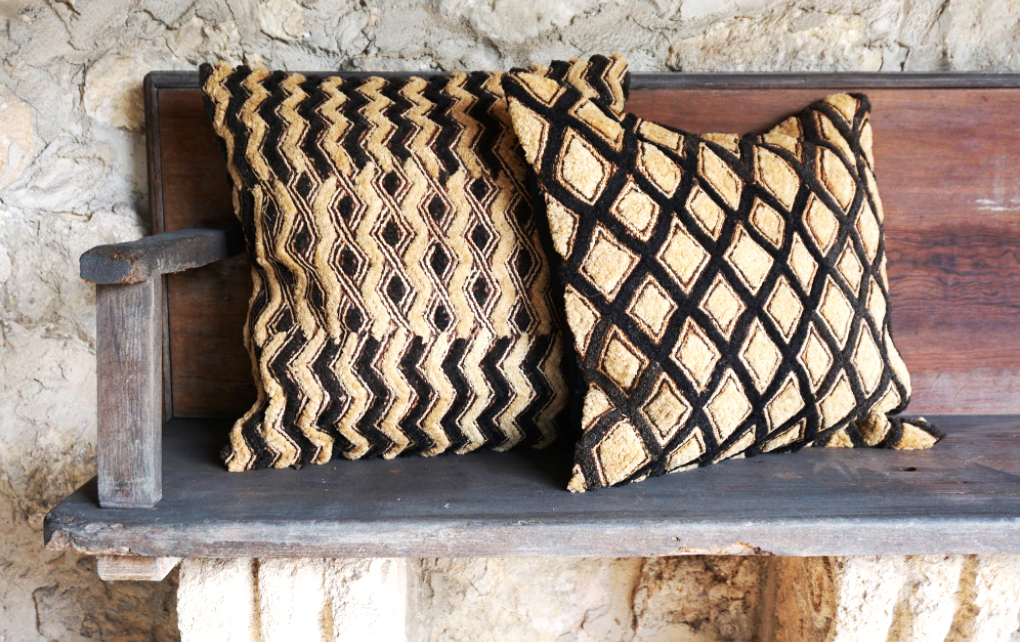http://blog.mixfurniture.com/crazy-for-kuba-cloth/
While we’re discovering the wealth of intricate textiles that hail from Africa…let’s take a journey to the Congo. Specifically, ALL things Kuba Cloth! Kuba textiles are unique to the ‘Democratic Republic of Congo’, formally known as Zaire.
The textiles themselves are beautifully executed geometric designs of alternating linear embroidery, that often times resembles velvet. Kuba cloth is organic and earthy, possessing an almost otherworldly magical quality.
Find a plethora of worldly woven Kuba treasures by visiting Design MIX Furniture’s showroom! Taking a trip to the Congo can be as simple as stepping out onto your patio. Sprinkle your sofa with texturally rich Kuba pillows!
Natural Kuba grass cloth textile with traditional black and tan diamond design. Black soft canvas back with down insert. http://blog.mixfurniture.com/crazy-for-kuba-cloth/
The gritty warmth of the textiles is seen directly in the culture of the Congo’s people. Historically, Kuba cloth has been used in ceremonial skirts, wrappers, tribute cloths, sleeping mats, headdresses, basketry and even currency. Nowadays, textile enthusiasts have introduced thoughtful aesthetic applications for our sanctuaries that we call ‘home’.
But, before these Kuba treasures reach the confines of our spaces, how do they come to be…?
It’s primitive nature allows Kuba Cloth to be simultaneously ancient and ritualistic, in it’s creation. Graphically, the textile is distinctive and evocative of the Congo. The earth and terrain of it’s origin is seen directly within the rich strands of the textile’s weave. Kuba cloth is handwoven using strands from raffia palm leaves. The raffia palm tree is known for having the longest leaves in the world. The raffia strands are dyed in a variety of earth tones, using vegetable dyes. Textile variations are executed on rectangular pieces of woven palm leaf fiber.
In the dusty Congo, men of the ‘Kuba’ culture are responsible for the raffia palm cultivation and weaving the cloth itself. Men produce the cloth on inclined, single-heddle looms. ‘The transformation from leaf to textile is easy to comprehend, but tedious to execute. Discarded leaves are gathered, dried, and softened by being pounded in a mortar. The leaves are then dyed and stripped down to individual fibers before being woven into panels or strips, that are then embroidered (Dugan)’.



